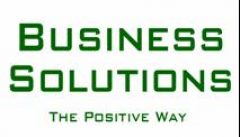Do you look at your payroll and think “expense” or “asset?”
When the pressure is on to increase profits it can be very challenging to answer this question properly. The right answers can be vital to success or, in some cases, survival.
The reality is that people cost money but without their productive efforts most businesses will fail. You have two questions you can ask when you look at payroll:
- How can I cut payroll costs? This is the “expense” question that infers that payroll is a burden.
- How can I increase revenues and profit from my existing payroll? This is the “asset” question that infers that payroll is a source of revenues.
Best practices asks both of these questions but asks #2 first. It is incumbent upon management to maximize the revenue generating capability of their staff before resorting to cutting head count.
The mantra of Profit Improvement is: “You cannot cut your way to long term success.” Reference: Achieving World-Class Profit Improvement.
You must engage and empower your people to have any chance of success. Engage them with leadership and empower them with training.
What’s it worth? It’s worth everything.
